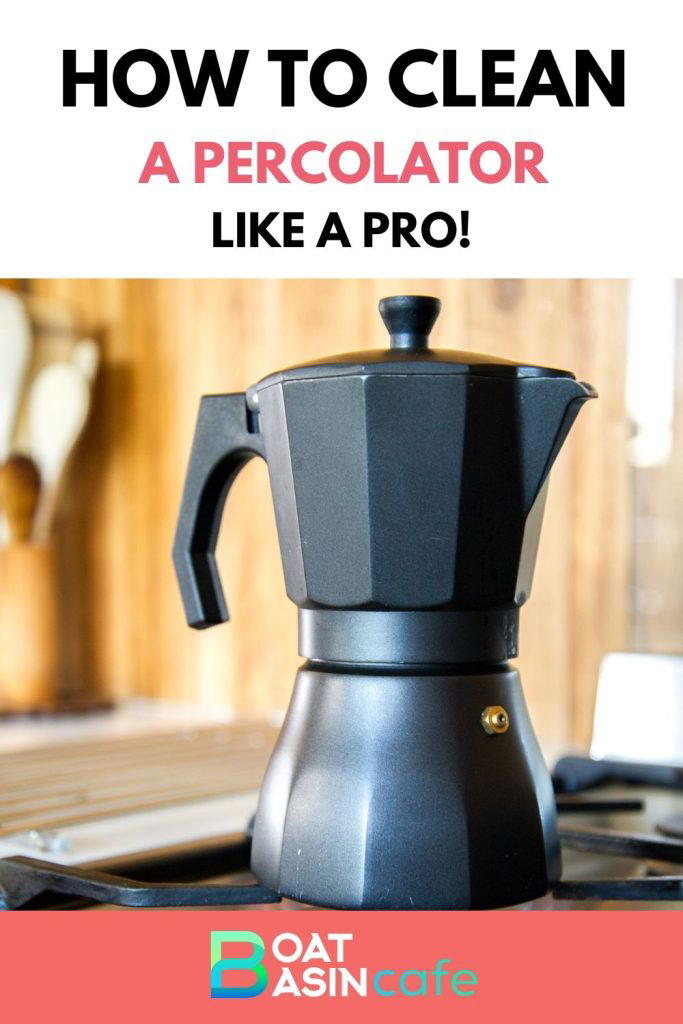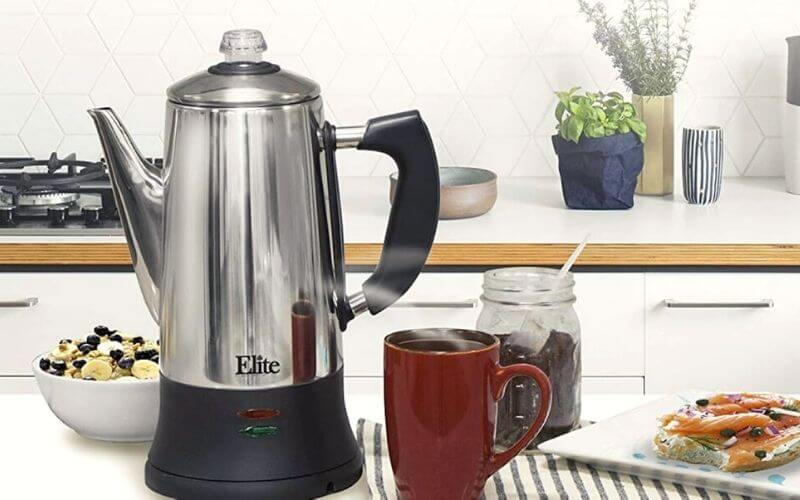Got a dirty percolator that you’re not sure how to fix? This will show you in detail how to clean a percolator.
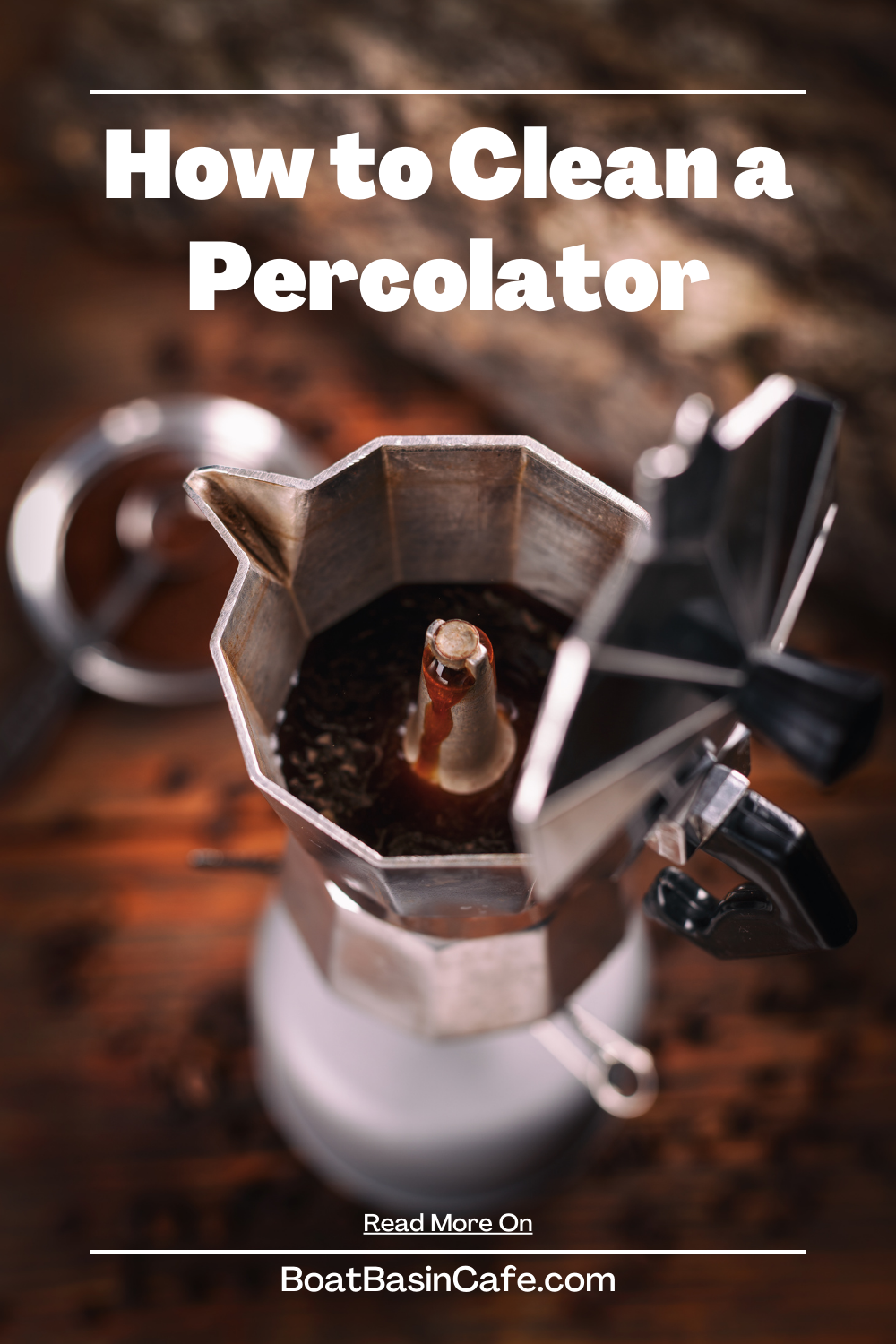
Whether you like a hot cup of coffee to get the day started or a frothy latte to settle in after a long shift, the taste of a good solid cup of coffee can lift the dampest of spirits.
This rings especially true for percolator coffee. This kind of brew is much stronger and more intense than something brewed in a French Press or drip coffee maker. But what do you do when your coffee tastes stale, burnt, and reminiscent of swamp water?
The issue may be that your old percolator coffee pot needs a good cleaning. Coffee residue can linger in your coffee maker, as well as minerals from the water used can build up. This, along with remnants of used grounds can haunt your percolator, ruining the taste of your coffee.
The idea of a coffee percolator cleaner can be intimidating, but it doesn’t have to be that way. In this article, we will look at the methods on how to clean a percolator. Whether you own a traditional stovetop percolator or an electric one, we have you covered.
How to Clean a Stovetop Percolator
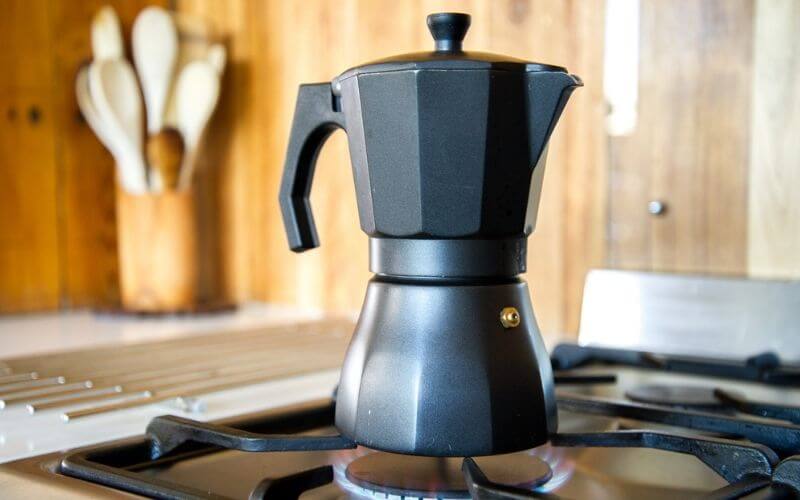
Coffee is notorious for leaving stains. Whether it is a marble or glass coffee pot, or a stainless-steel percolator, coffee will leave stains over time. In this section, you will learn how to clean a stainless-steel coffee percolator.
A stovetop percolator is easier to clean as you don’t have to worry about the wiring and circuits. These percolators are also more long-lasting and will work for years; even being passed down from generation to generation.
While you should wash your percolator with dish soap after every use, this is more suitable for deep cleaning the unit every month. Here is how to clean stainless steel coffee pots.
What You Need:
- Brush
- Baking Soda
- Salt (Optional)
- Water
- Apple Cider or White Vinegar
What You Need to Do:
- Fill your percolator with water.
- To the water, add a quarter cup (4 tablespoons) of baking soda. You can add a spoon of salt as well if your coffee maker is smelly.
- Place it on the burner and let it run a cycle.
- Let the water cool slightly, then scrub the inside with a brush to loosen any residue and build up.
- Throw out the water and rinse well.
- Then, fill your percolator with equal parts water and vinegar.
- Run another brewing cycle and wait for the percolator to perk; then discard the water and rinse again.
- Run a third cycle of fresh, clean water to rinse any leftover vinegar or baking soda. You can repeat this step until you are sure your percolator doesn’t smell like vinegar.
How to Clean an Electric Percolator
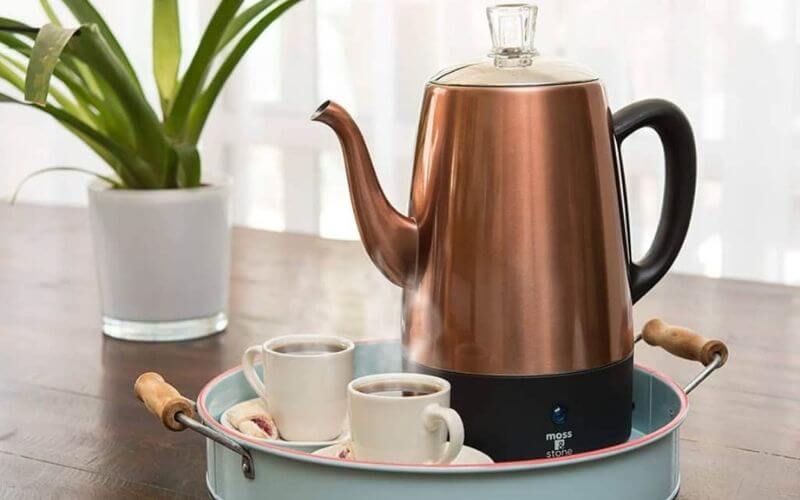
If you own something like a West Bend percolator, this section is for you. Let’s find out how to clean an electric coffee pot or percolator.
What you need:
- Dishwashing detergent or Dip-It percolator cleaner
- Baking soda
- White vinegar
- Hydrogen Peroxide (Optional)
What you need to do:
Basic Cleaning:
First, you need to clean the percolator the regular way. Unless mentioned otherwise, do not try cleaning your percolator in a dishwasher. Also, do not use steel wool scrubbers and harsh abrasive materials as this will scratch and damage your percolator.
You should always use something like a washcloth or soft rag. If there’s a stubborn stain or residue, use a plastic scrubber or dish brush. Harsher materials will scratch off the protective coating and your percolator will rust or stain easily.
When cleaning your percolator, remove any trapped coffee granules in the small spaces between parts. You can get rid of them with a toothpick or a pin.
Vinegar Wash:
Removing limescale and buildup is one of the most important parts of deep cleaning your percolators. A lot of this buildup is calcium and other salts from your water and can be dissolved in acidic solutions like vinegar.
- Dry the coffee maker and prepare it for use. You have to run a cycle with a solution of vinegar and water.
- To do this, fill half the percolator with water. Then, add vinegar until the percolator is full. This mixture will descale the inside and parts, neutralizing alkaline compounds without ruining the metal.
- Insert the basket, close the lid, and start a brew cycle. Give this solution 15 to 20 minutes to do the descaling.
- After this time passed, unplug the percolator and pour out the water. Let it cool for another 15 minutes, and then wash it by hand with dish soap or Dip-It coffee cleaner for percolators.
- Next, dry the percolator and fill it with fresh water. Plug it in and run another brew cycle. Empty out the water and repeat again with clean water. This will remove the smell of vinegar from the percolator.
In most cases, this vinegar brew is enough to clean your percolator. But if it is extreme, you might need the next step for a more thorough cleansing.
Baking Soda Scrub:
While most grime and residue are generally washed out with either soap or vinegar, more significant buildup will need something more abrasive to clean. This something is baking soda, and the gritty texture does a good job of removing stains, smells, and stubborn residue.
- To clean with this pantry staple, drop a tablespoon or two of baking soda in your percolator and dissolve it in some water. Let the mix sit for a few minutes.
- Then, wash and rinse as usual. You can use a dishcloth or soft brush for extra cleaning power.
- If there are still stains and gunk in your percolator, it may be time for a different remedy. Use a mix of hydrogen peroxide diluted in water to clean your percolator.
- Still dirty? This might help.
- Coat the dirty surfaces with a paste made from baking soda and a tiny bit of water. Let it sit for a couple of minutes and settle.
- Pour vinegar over this mixture. The fizzy neutralization reaction loosens up hardened gunk and residue.
- After the fizzing has subsided, rinse with water and enjoy your clean percolator.
How to Clean a Percolator Basket
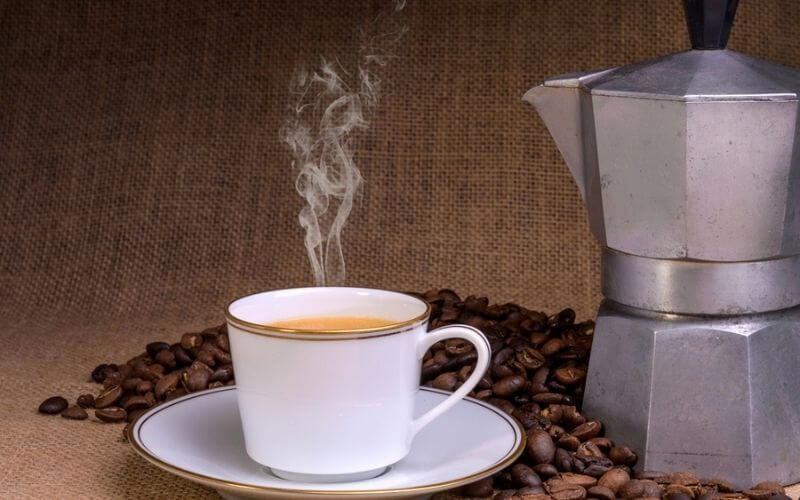
Often, you don’t have to clean your entire percolator; just the basket. This is the part that tends to get most of the build-up and is used most frequently.
This saves a lot of time that would have been spent deep cleaning your entire percolator.
To clean your percolator basket, soak it in a mixture made of equal parts hot water and vinegar. Let it soak in the solution for a couple of hours, and even overnight.
Rinse well afterward and run a cycle with plain water to get rid of the vinegar smell if needed.
How to Keep Your Percolator Clean
Keeping your percolator clean can prevent the need for frequent deep cleaning, saving you precious time and elbow grease.
- Rinse out the percolator after each use. Empty the basket and wash it out with dish detergent.
- Use a soft cloth, dish scrubber, or brush to clean the percolator to prevent scratching the unit.
- Throw out any coffee that remains in the percolator instead of letting it marinate in the pot for hours.
- Only use a little soap of dish fluid to prevent your coffee from tasting soapy.
Any Questions?
Here we answer questions you might have about cleaning your percolator.
01. Where Can I Find Parts for Farberware Percolator?
These parts can be found on Amazon, Etsy, and eBay. The parts include the basket washer and even cords that need replacing.
02. Can I Use Salt to Clean My Percolator?
Adding salt can neutralize stale and burnt smells in your coffee maker. However, using it to replace the baking soda can scratch up the steel of your percolator.
03. Can I Use Lemon Juice Instead of Vinegar for Cleaning?
Swapping vinegar for an equal amount of lemon juice will work just fine to remove build-up and residue in your percolator.
04. How Do I Unclog a Percolator?
Mix half a cup of hydrogen peroxide with vinegar and let the mix sit in your coffee maker for about an hour. Pour out the mixture and rinse the percolator with hot water.
Conclusion
The best way to get the most out of your coffee maker is to keep it clean and functional. Know that you know how to clean a percolator, you can keep yours in the best shape possible. With a clean and spiffy percolator, you can brew the strongest and freshest tasting coffee right at home.
A clean unit will brew barista-style coffee no matter what. And with that strong coffee as a base, you can flex your home brewing skills and make things like smooth and rich lattes, cortados, and mochas right in your kitchen.
More Related Articles:
- The Best Coffee Percolator Filters And How to Use a Percolator
- How to Make Coffee in a Percolator: Get the Strongest Brew Possible!
Pin Later
